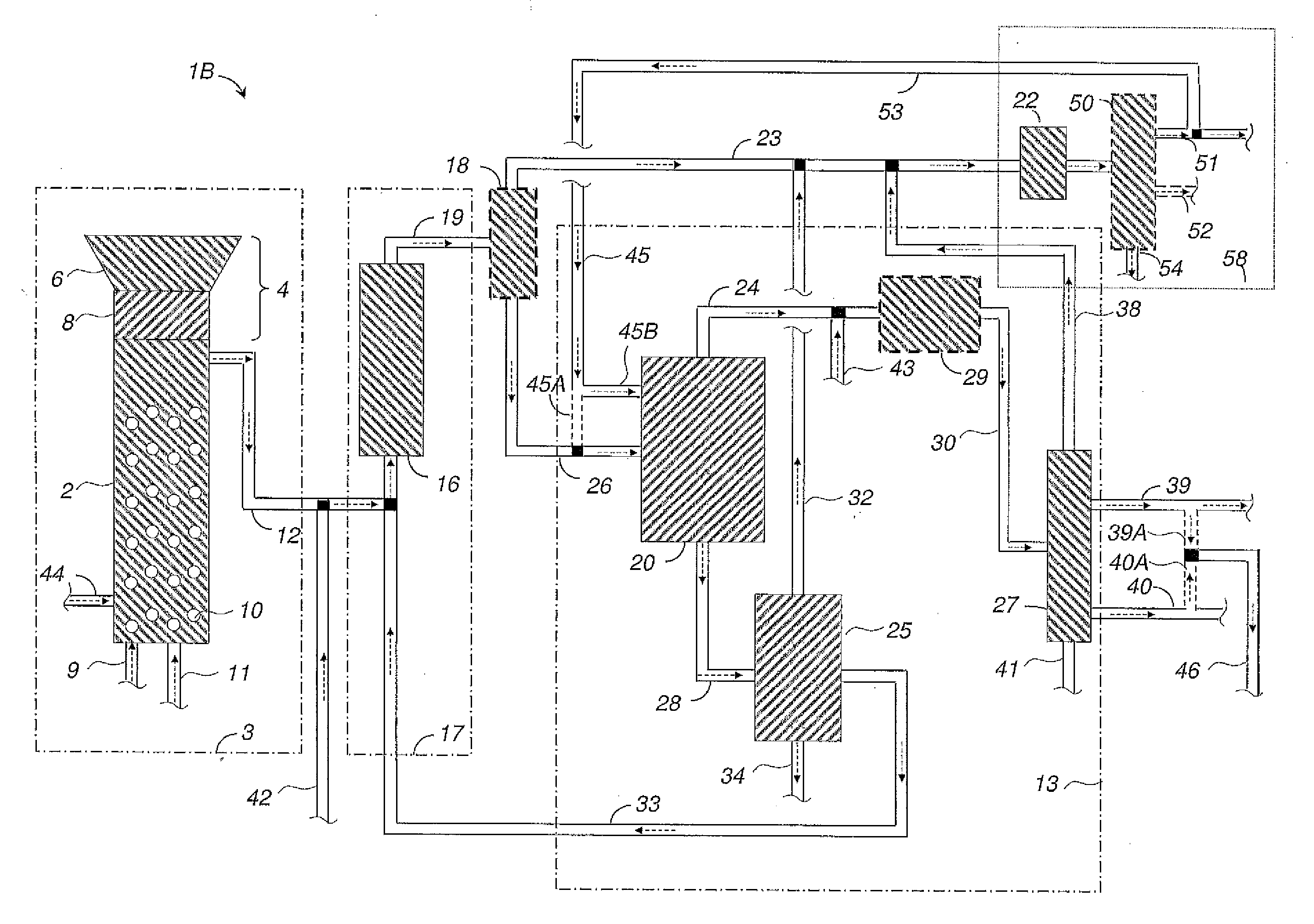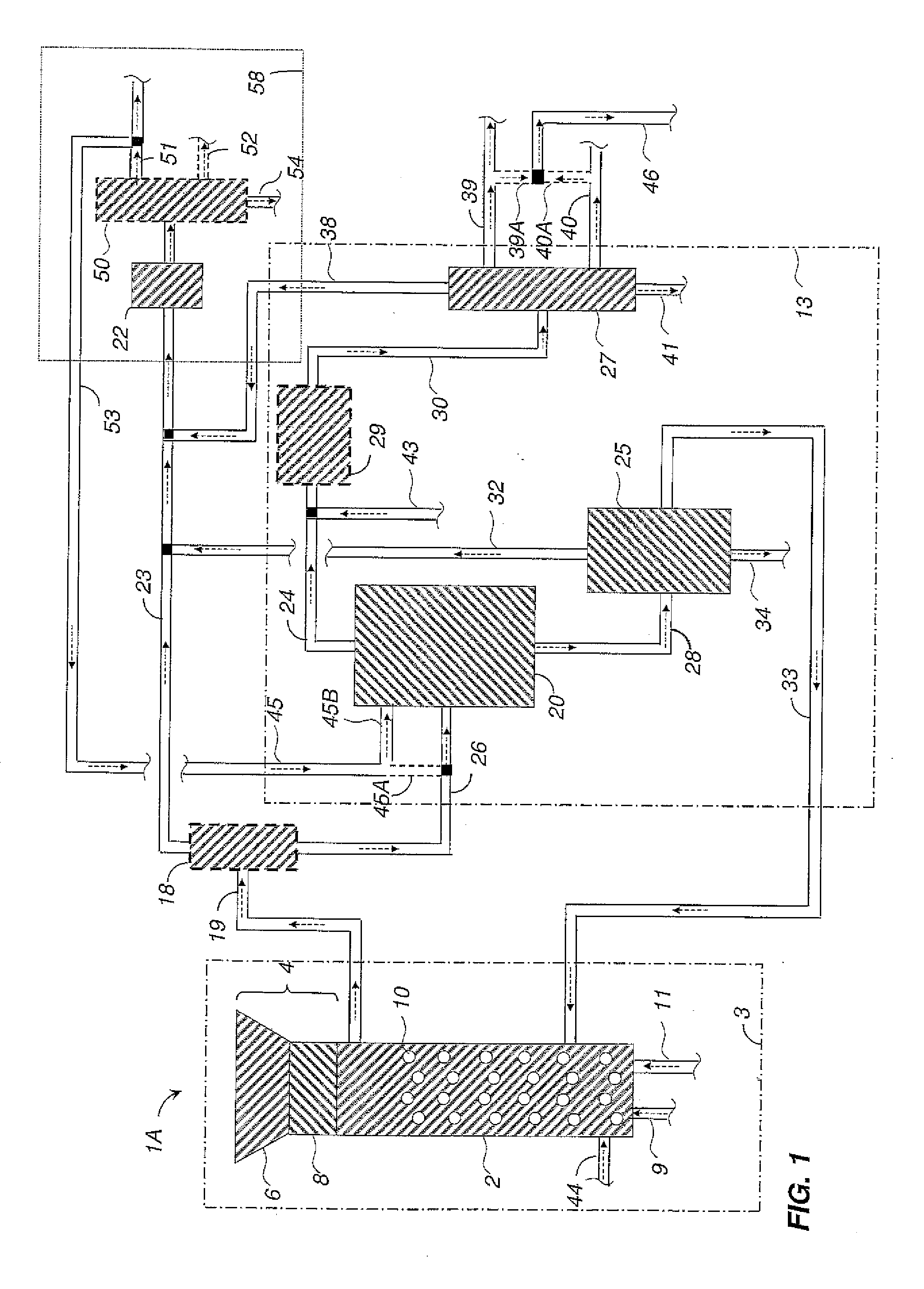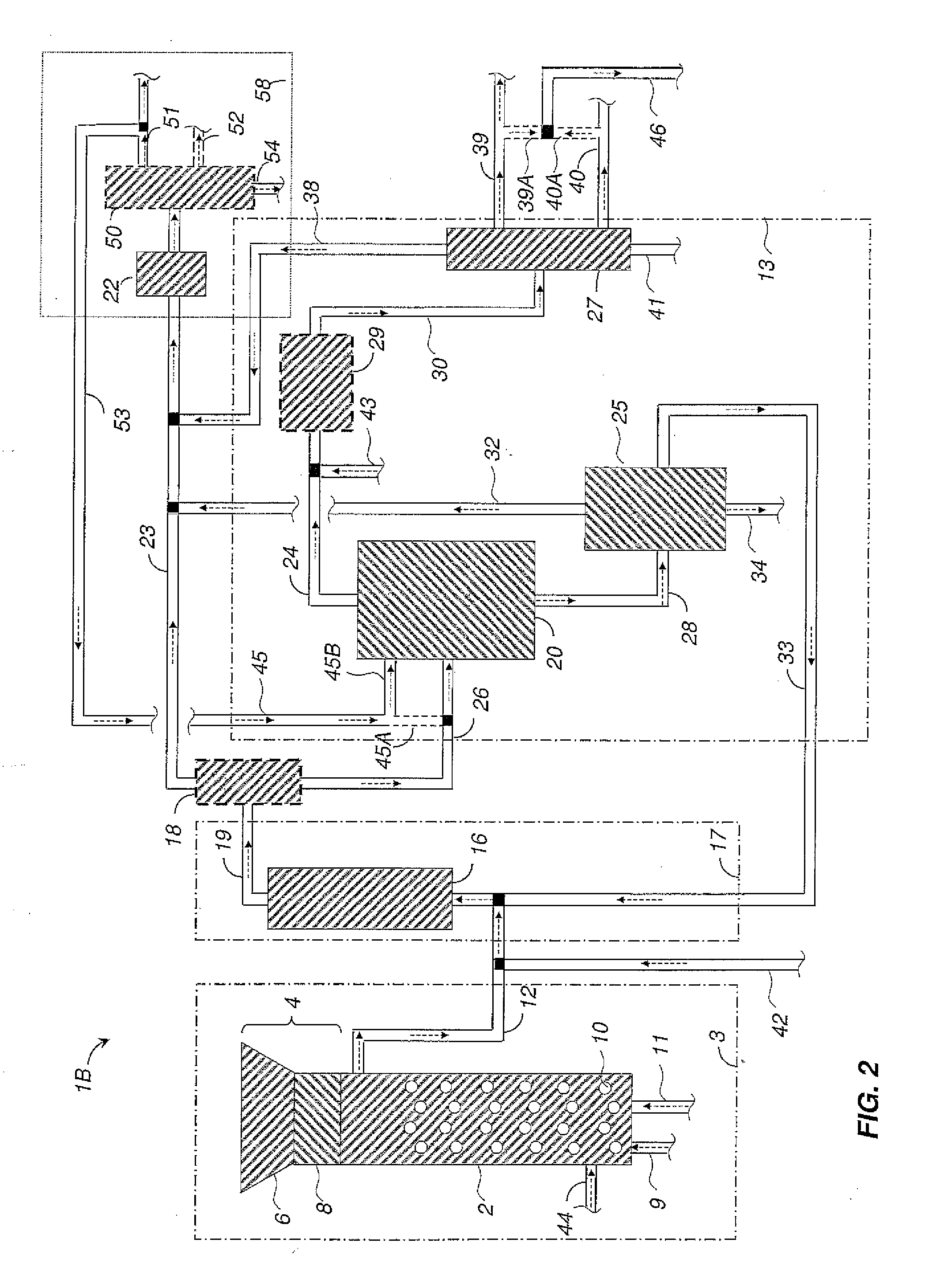Methods and systems for processing cellulosic biomass
a cellulosic biomass and cellulosic biomass technology, applied in the direction of cellulose treatment using microorganisms/enzymes, extraction purification/separation, fuels, etc., can solve the problems of difficult recovery of various compounds from a product of cellulosic biomass, poor product separation and steam stripping, and increased equipment costs. , to achieve the effect of adequate product separation and reduced steam stripping
- Summary
- Abstract
- Description
- Claims
- Application Information
AI Technical Summary
Benefits of technology
Problems solved by technology
Method used
Image
Examples
example 1
Distillation of Total Reactor Contents
[0153]A 450-ml Parr reactor was charged with 20.02 grams of 2-methoxy-4-propylphenol (MPP), 190.01 grams of deionized water, 0.4192 grams of potassium hydroxide buffer, and 7.2522 grams of nickel-oxide promoted cobalt molybdate catalyst (DC-2534, containing 1-10% cobalt oxide and molybdenum trioxide (up to 30 wt %) on alumina, and less than 2% nickel), obtained from Criterion Catalyst & Technologies L.P., and sulfided by the method described in US2010 / 0236988 Example 5.
[0154]The reactor was then charged with 14.02 grams of southern pine mini-chips (10% moisture), of nominal size 3×5×5 mm in dimension, before pressuring with 52 bar of hydrogen, and heating to 190° C. for 1 hours, then ramping to 245° C. for 2.5 hours.
[0155]After reaction, thereactor was cooled and depressured. A nominal 14 grams of wood chips were added, followed by repressuring with 52 bar H2, and conducting a second reaction cycle using the same heating profile. The sequence wa...
example 2
Separation by Extraction Followed by Distillation of Separate Phases
[0165]Example 1 was repeated using 5.0035 grams of Raney™ cobalt catalyst (WR Grace 2724), and a solvent comprising of 21.1 grams of 2,6-xylenol as the phenolic solvent, solubilized first into 7.00 grams of methylisobutylcarbinol, and added together with 182.01 grams of deionized water to the 450-ml reactor. Reaction cycles entailed 1 hour at 160° C., followed by 1 hour at 190° C., followed by 3 hours at 240° C. Six cycles of wood addition were effected, followed by heating overnight at 270° C. under 52 bar of H2 to complete the conversion of intermediates.
[0166]At the end of the reaction sequence, 87.03 grams of toluene (simulated aromatics gasoline product) were added to the reactor, and the reactor was stirred at 150° C. for 2 hours to effect extraction. Stirring was then stopped, and the reactor allowed to cool. An upper toluene-rich phase of 127.39 grams was decanted, followed by 220.65 grams of a lower aqueous...
example 3
Lipophilic Alcohol Extraction
[0176]Example 2 was repeated, with use of 75.01 grams of methylisobutycarbinol (MIBC) instead of toluene as extractant.
[0177]Partition coefficients for the concentration by weigh in the upper MIBC-rich organic layer, vs. the lower aqueous layer, are reported in Table 2. Phenolics favourably partition into the organic layer. However, monooxygenates and even glycols exhibited a partition coefficient greater than 0.25, indicating that excess solvent with recycle could be used to extract the desired reaction intermediates away from the aqueous phase, with separation of the extracted solution by distillation, and recycle of extraction solvent. This, a moderate polarity lipophilic alcohol like MIBC can be used to extract all target reaction intermediates and solvents from aqueous solution, without the need for boil up of water.
[0178]The distillation of the upper layer organic-rich phase was conducted as before, with results shown in Table 3. The initial distil...
PUM
| Property | Measurement | Unit |
|---|---|---|
| Fraction | aaaaa | aaaaa |
| Boiling point | aaaaa | aaaaa |
| Condensation enthalpy | aaaaa | aaaaa |
Abstract
Description
Claims
Application Information
 Login to View More
Login to View More - R&D
- Intellectual Property
- Life Sciences
- Materials
- Tech Scout
- Unparalleled Data Quality
- Higher Quality Content
- 60% Fewer Hallucinations
Browse by: Latest US Patents, China's latest patents, Technical Efficacy Thesaurus, Application Domain, Technology Topic, Popular Technical Reports.
© 2025 PatSnap. All rights reserved.Legal|Privacy policy|Modern Slavery Act Transparency Statement|Sitemap|About US| Contact US: help@patsnap.com



